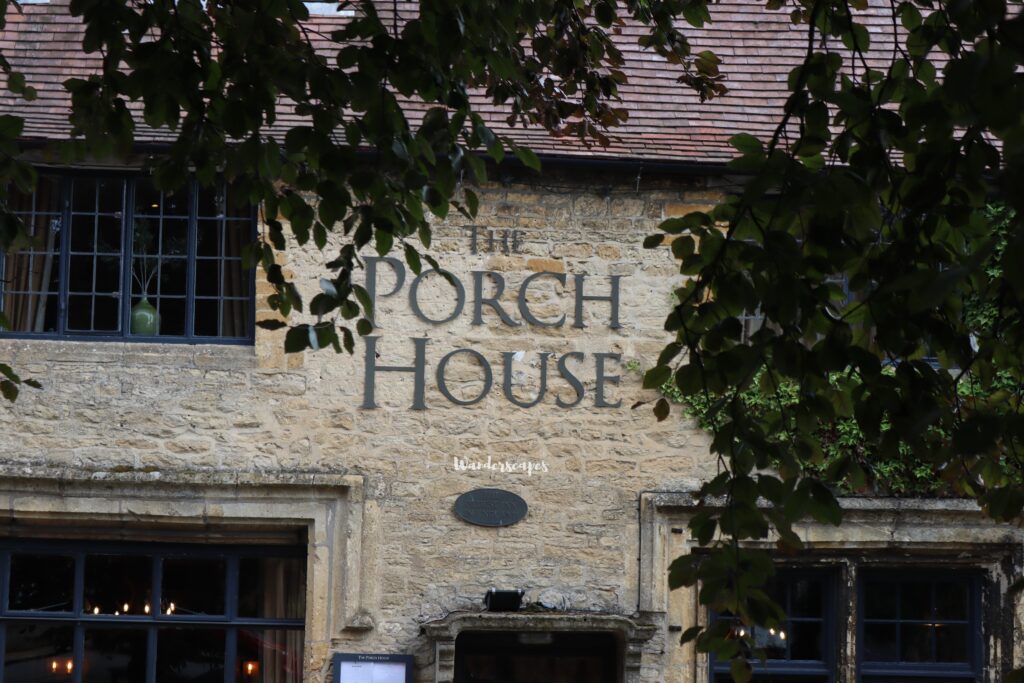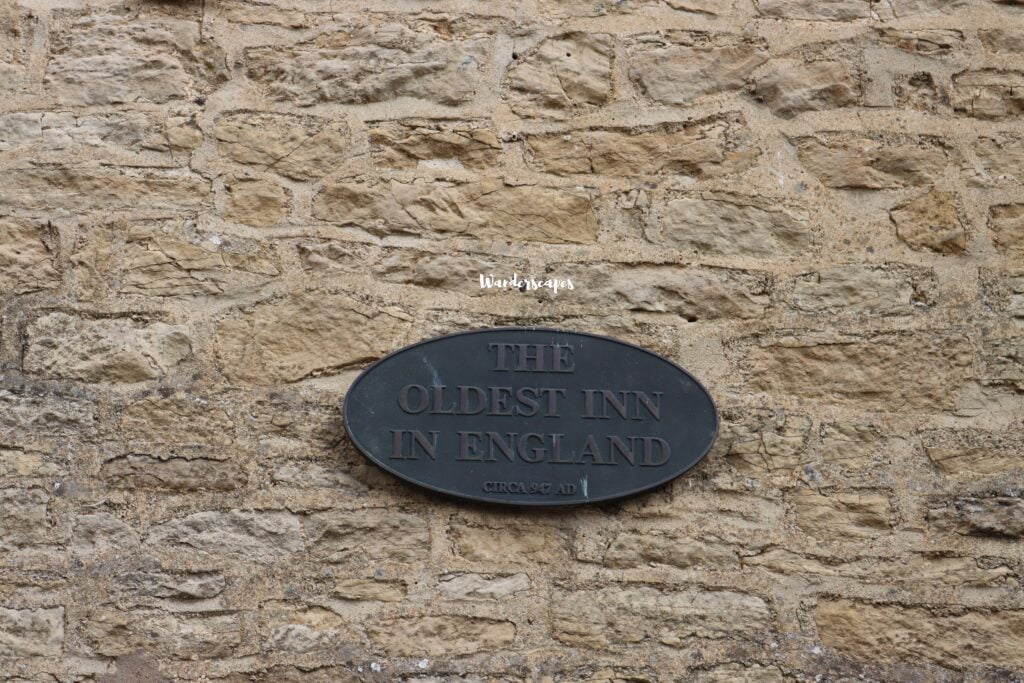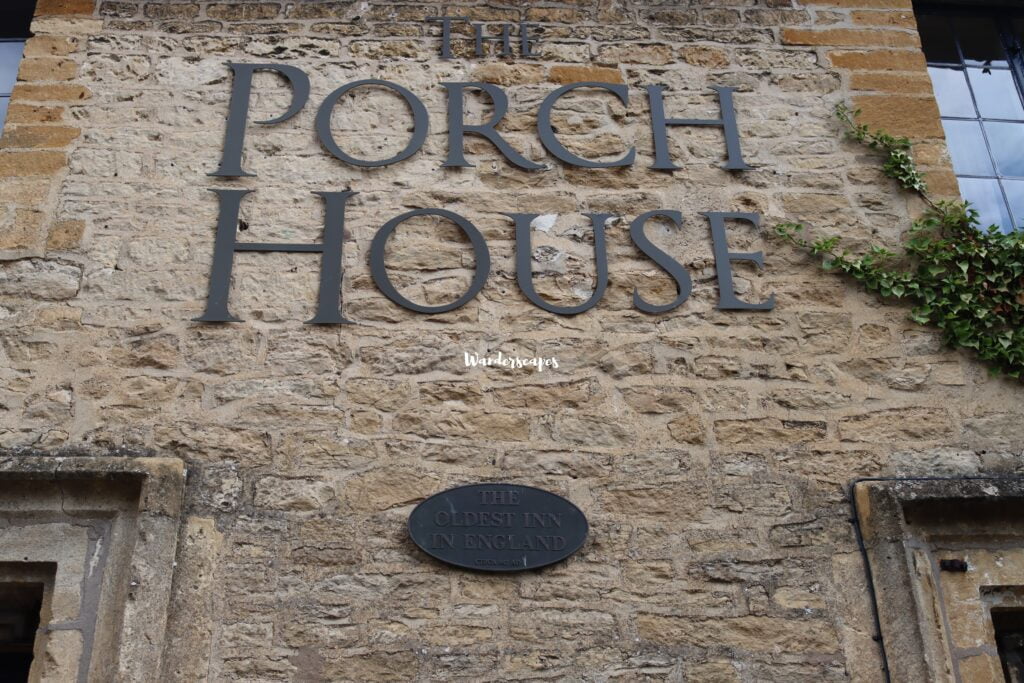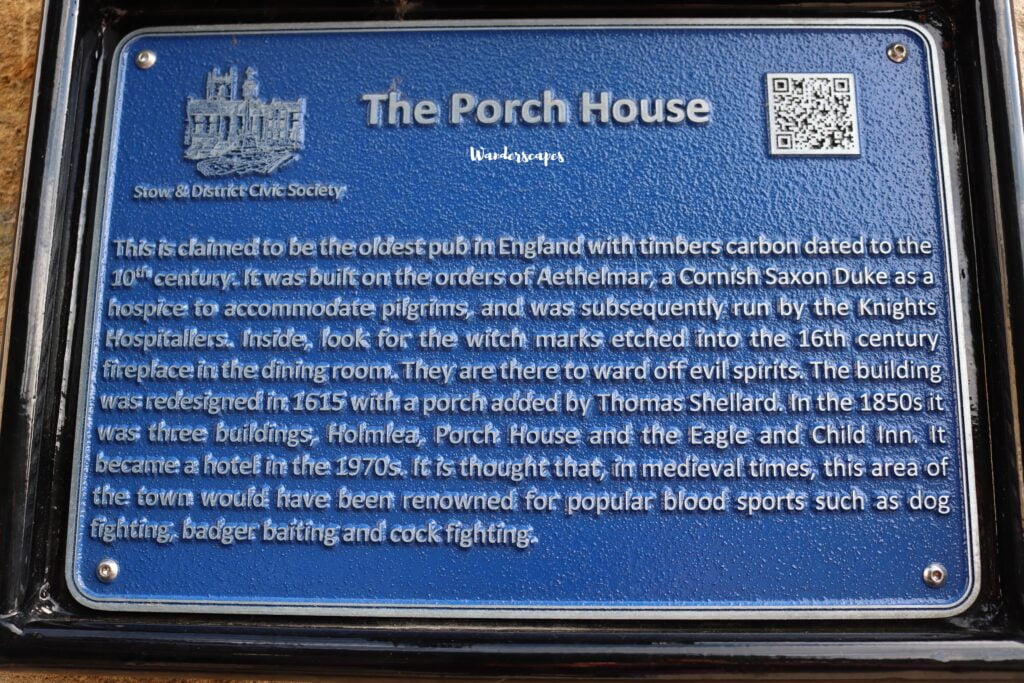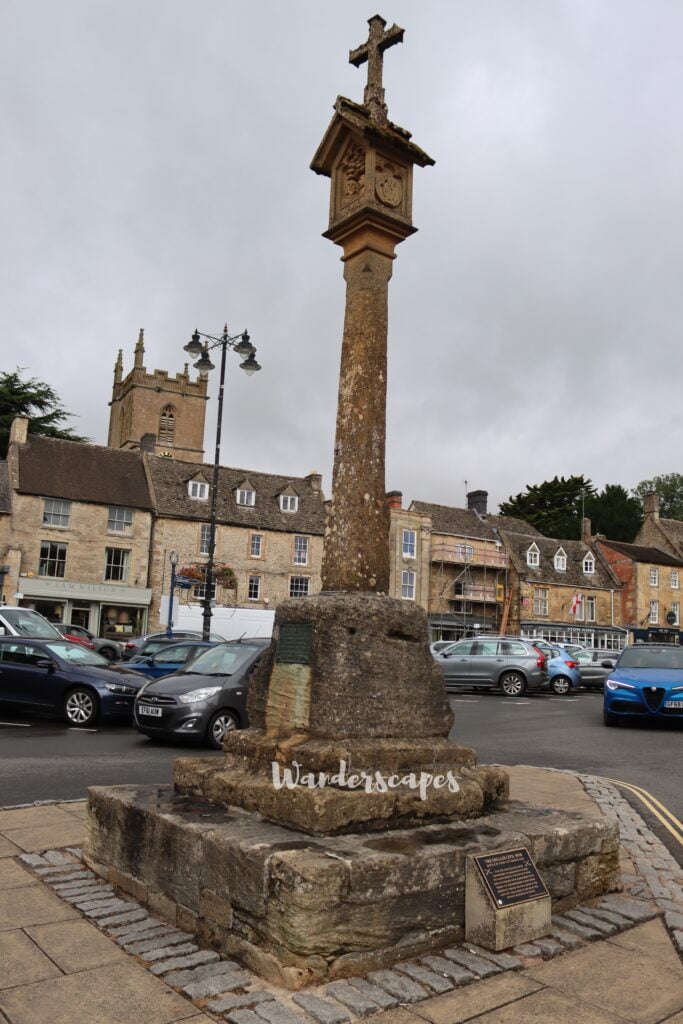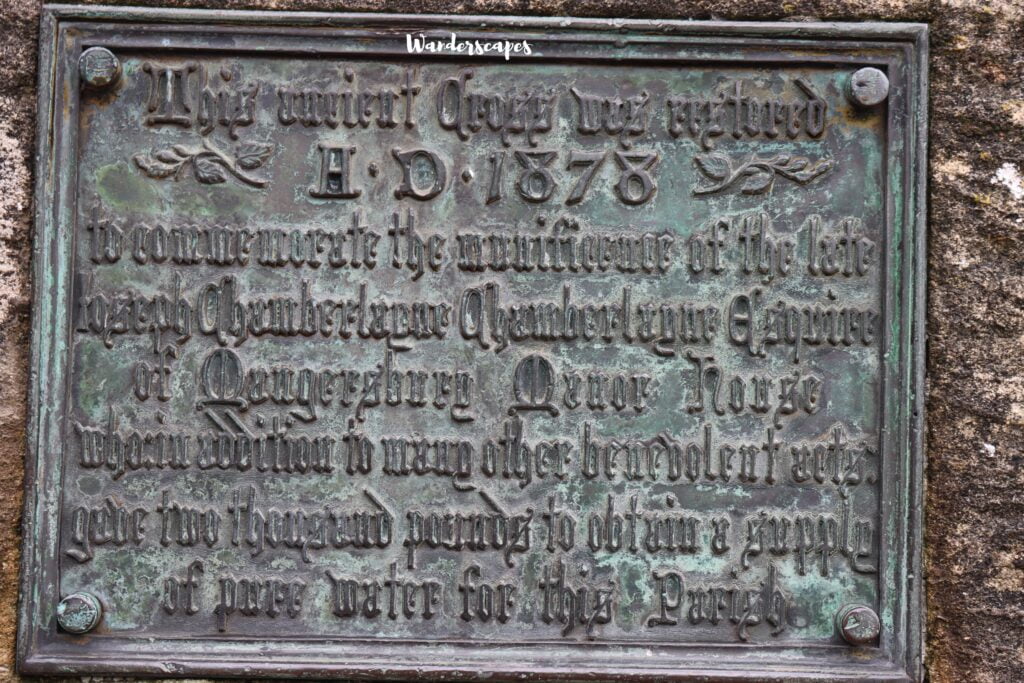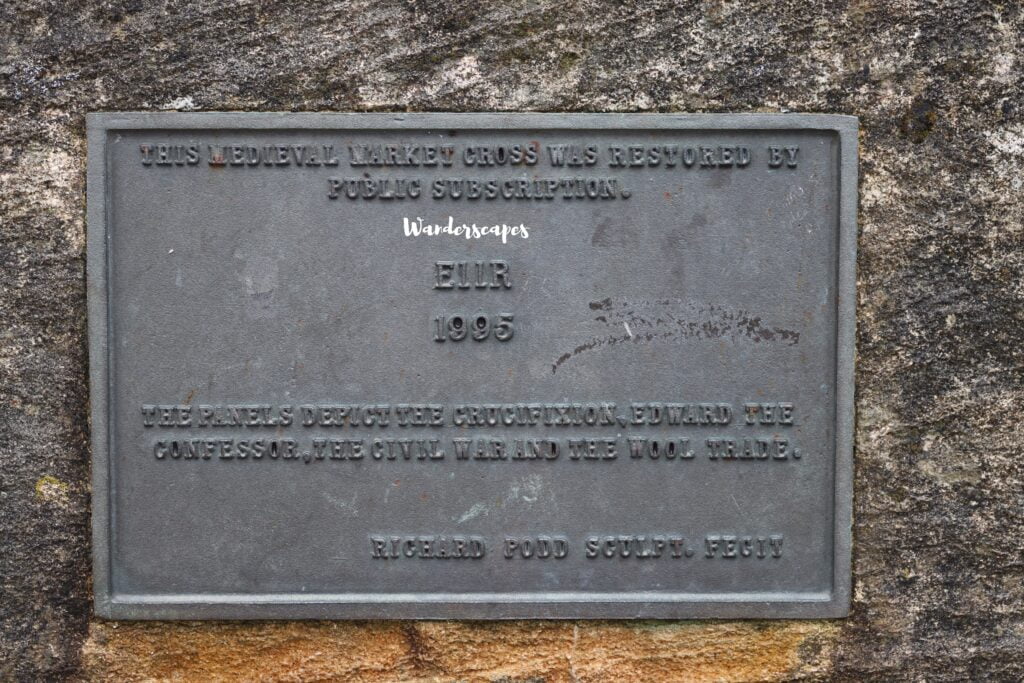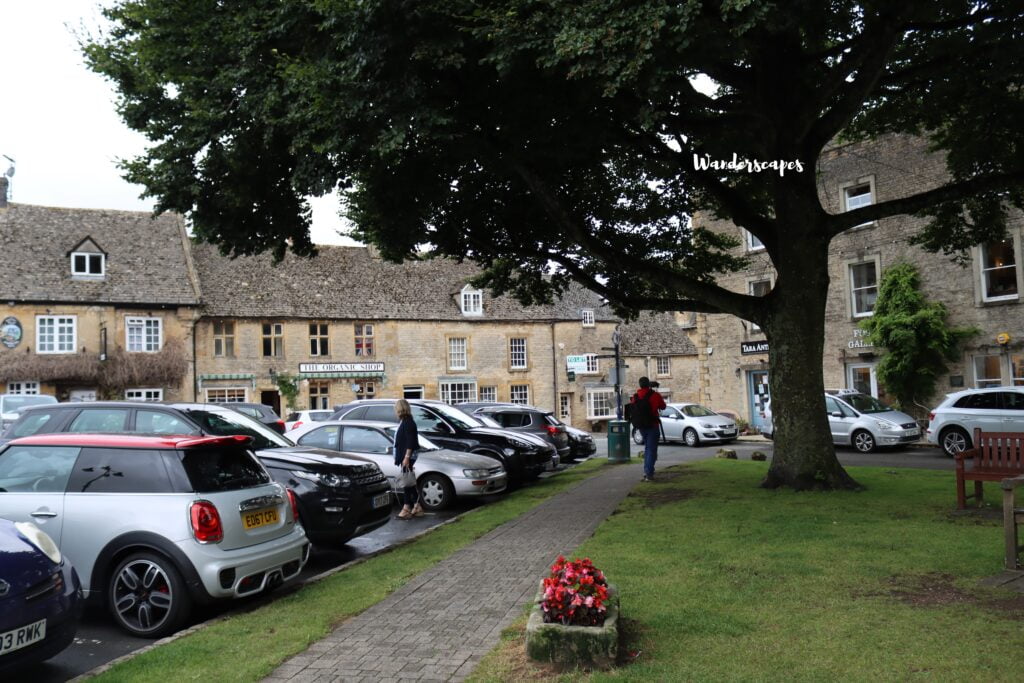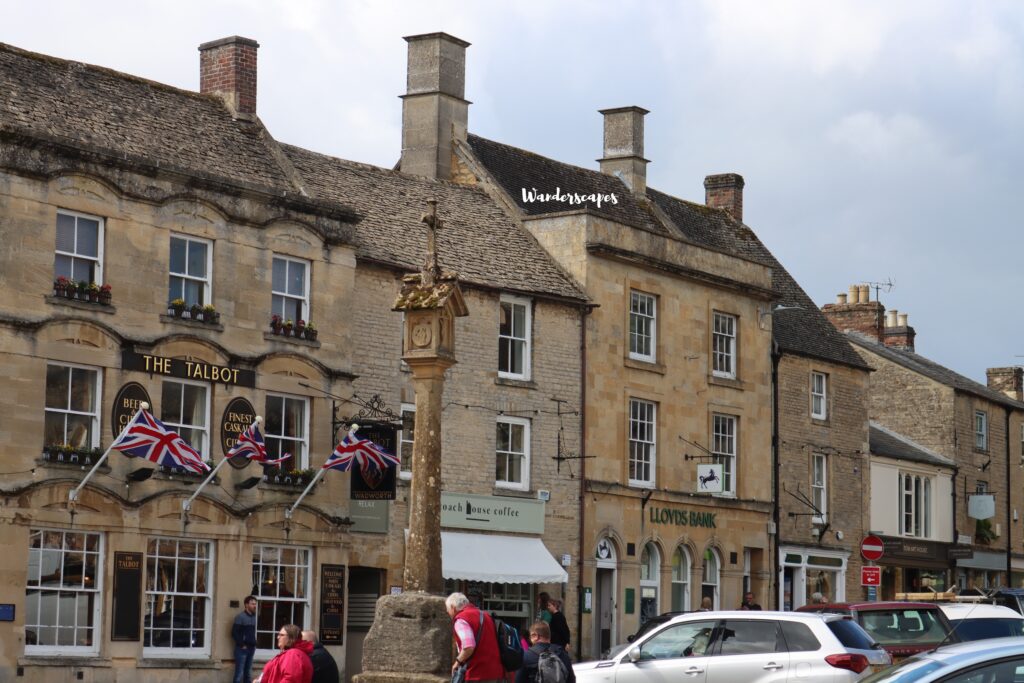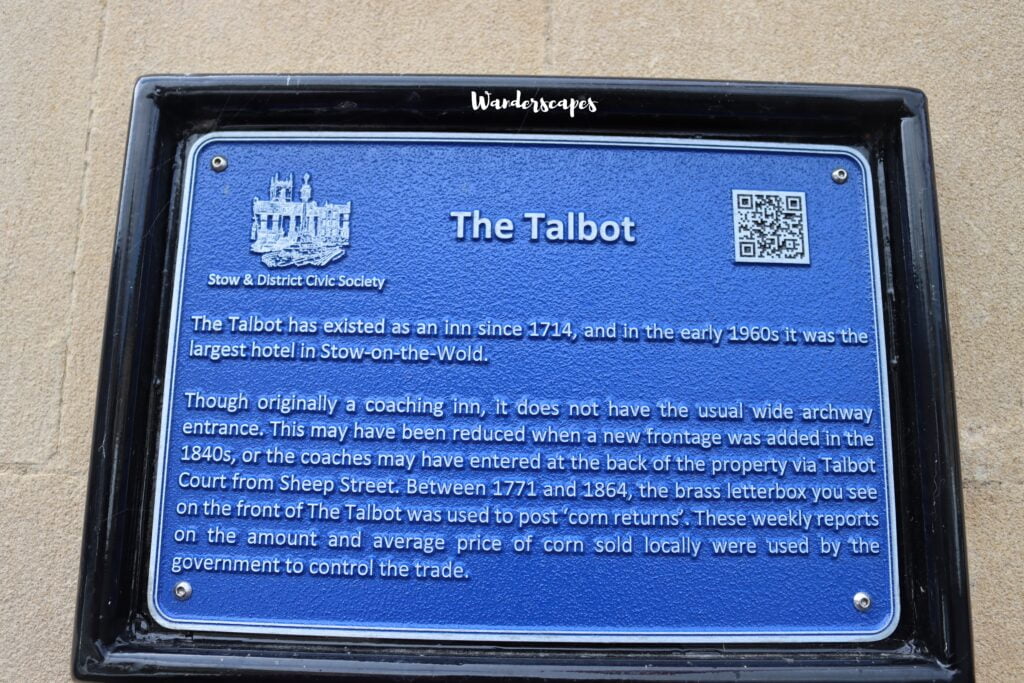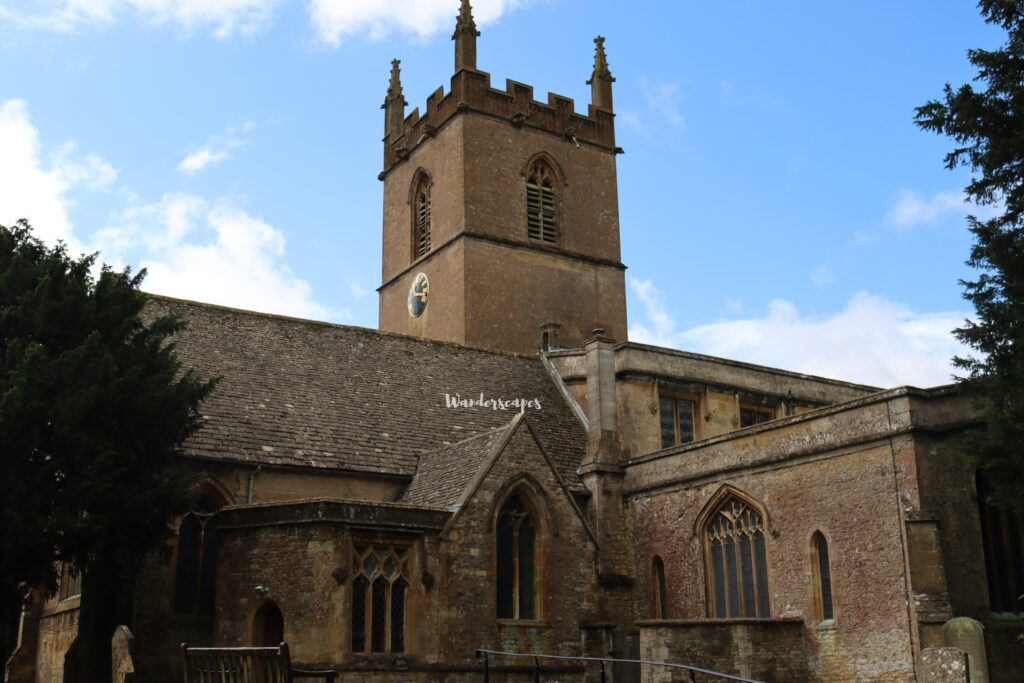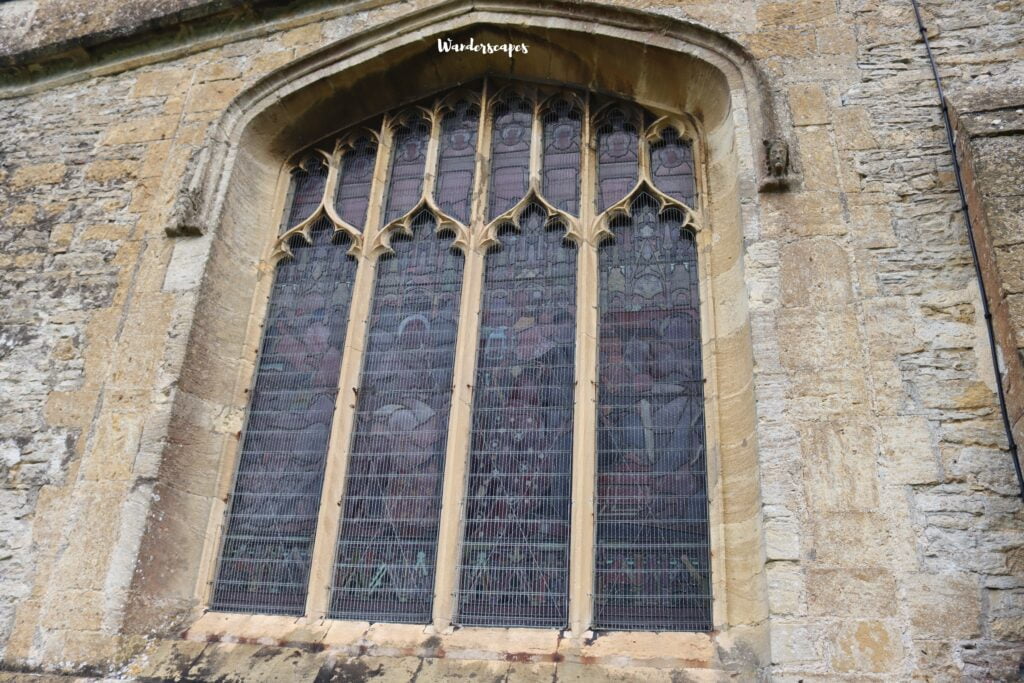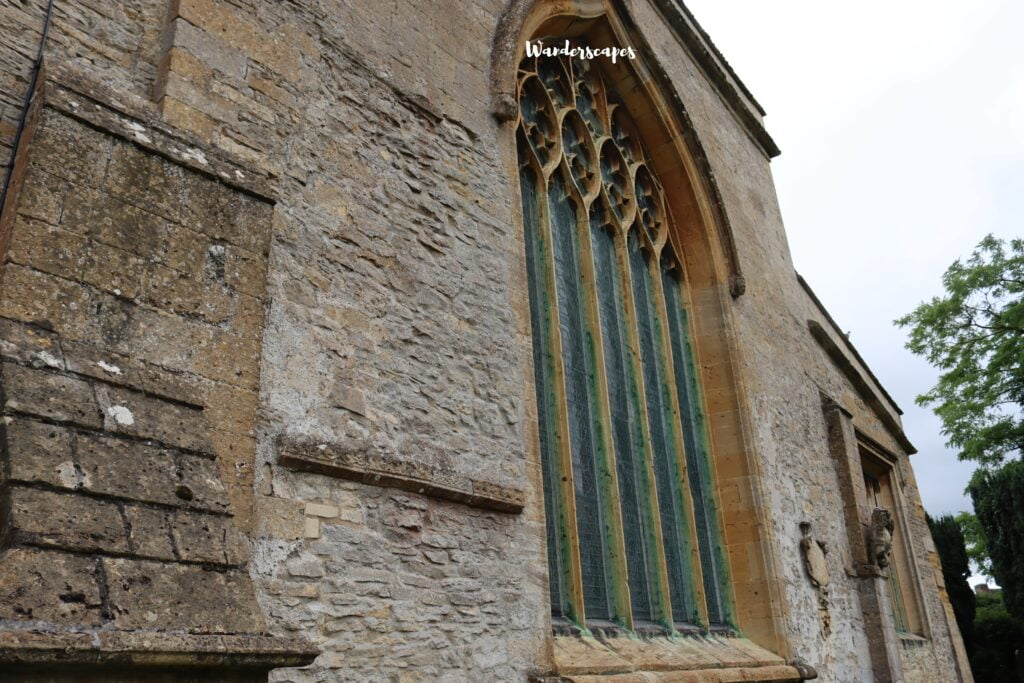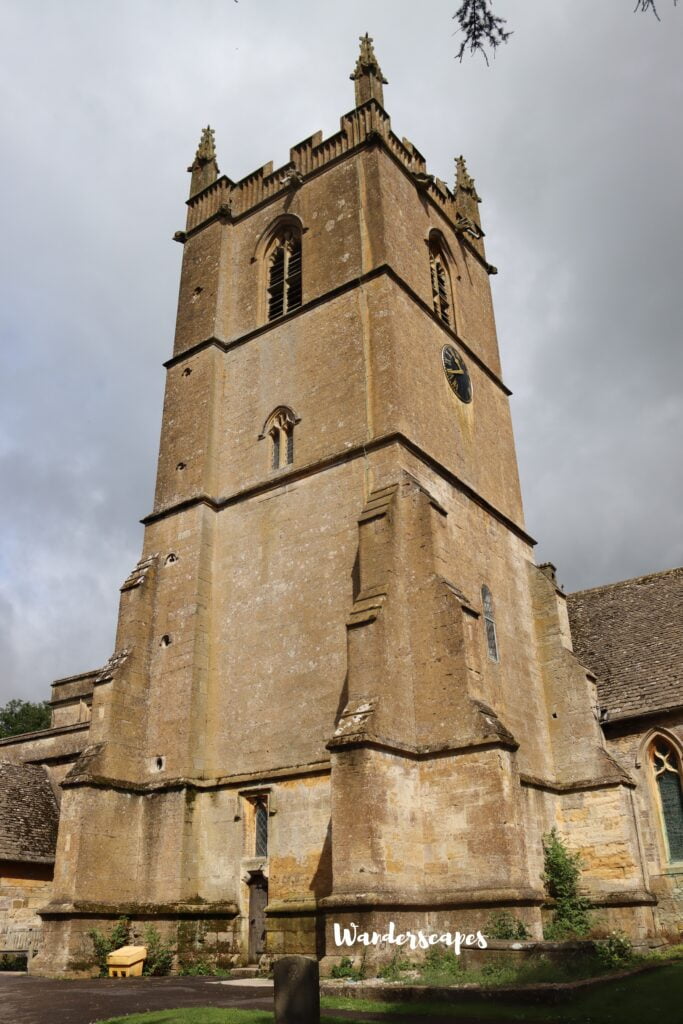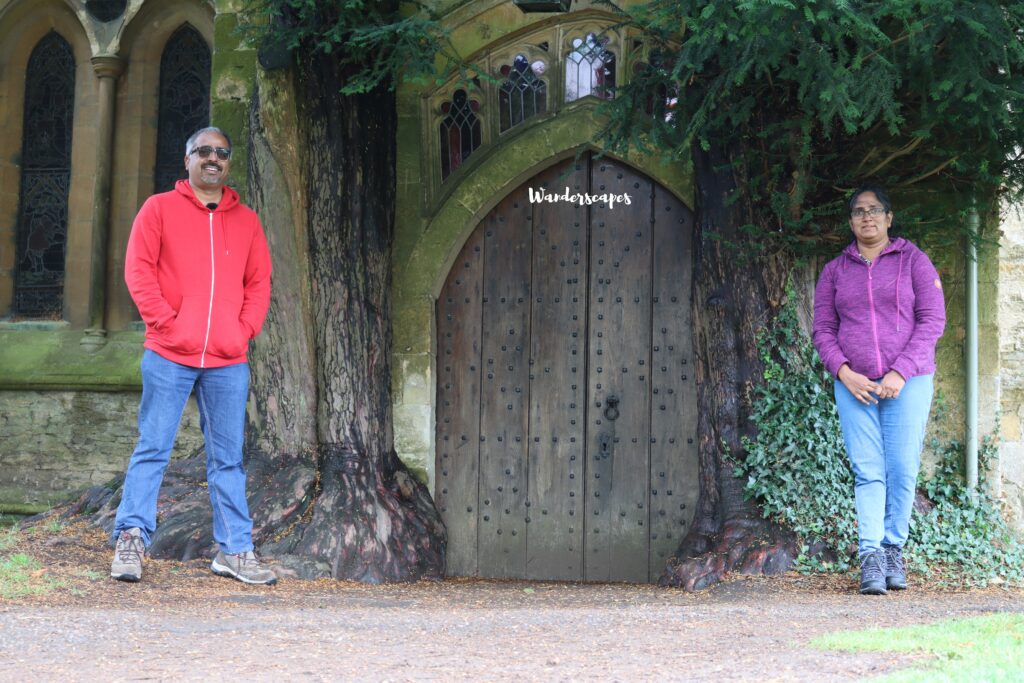We started the third and final day of our Cotswolds trip by a visit to Stow on the Wold. It is an erstwhile market town popular for its sheep trade. The site of the final battle of English Civil war, this charming English town has much to offer to the visitor. However, you will have to delve deep into the history of the town to find some hidden gems here. Let us see what are the must-see sights and experiences in Stow on the Wold.
Stow on the Wold – a Market Town
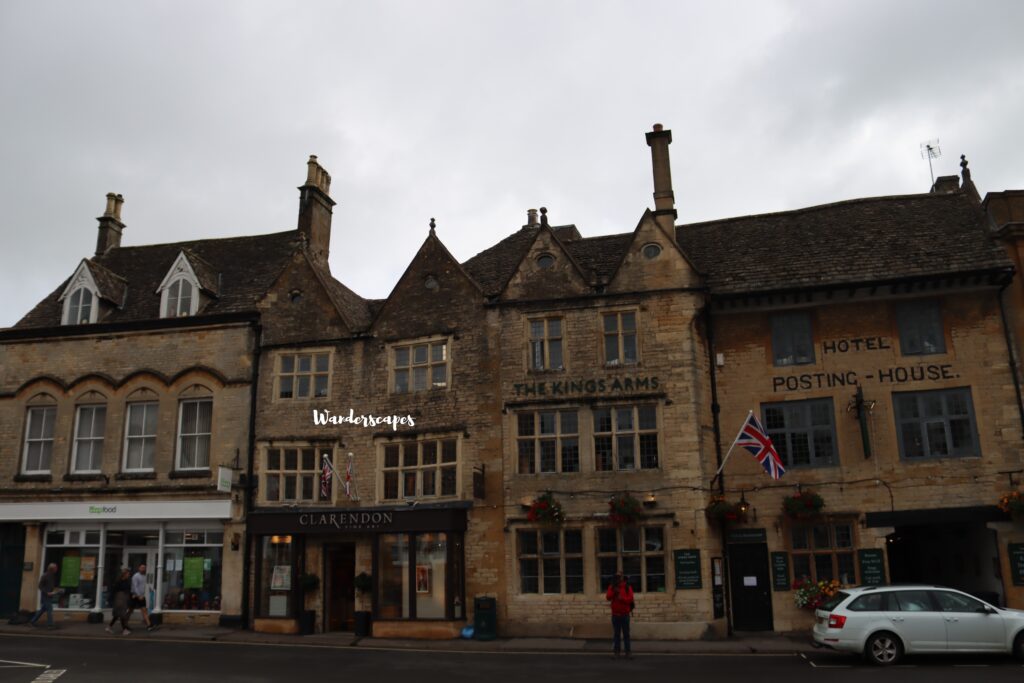
Stow-on-the-Wold is a market town in Gloucestershire, England. Seated atop an 800-foot hill, the town is at the junction of main roads running through the Cotswolds. It includes the famed Fosse Way (A429) from the Roman times. Norman lords founded the town to reap the benefits of trade from all the converging roads.
A huge sheep market with 20000 or more sheep traded, Stow on the Wold became one of the biggest markets of the time. The popularity was so high that the monarch of the time gave a royal charter to conduct a 7-day annual fair in the 1330s. Since then, they have held annual trade fairs in Stow on the Wold. A horse fair also takes place on the edge of the town in May and October each year even now.
The Story Behind the Name
Before we proceed any further, let us see how the place got its name. People started settling here from Iron Age, but certain evidences suggest there were earlier settlements. Stone Age and Bronze Age burial mounds commonly found in the area strengthens this theory.
People believe that during the Saxon times, a missionary named Edward lived here as hermit. He lived at a well on the south side of the town. This led to the town being known as St. Edward’s Stowe. Stowe in Saxon means Holy Place. Over time the name Edward disappeared and Wold came in. Wold, as you might already know means ‘rolling hills’. Slowly Edward’s Stowe became Stow on the Wold. In simple terms, it means a Holy Place on the Hill.
The Oldest Inn in England
Stow on the Wold is home to ‘The Porch House‘, which is popular as the oldest inn in England. Situated on Digbeth Street, this building dates back to 947 AD. Duke of Cornwall built a Saxon timber-framed building back in 947 AD on the land belonging to Evesham Abbey. It was originally a hospice to shelter lepers and since then, it has served as private home, inns and hotels.
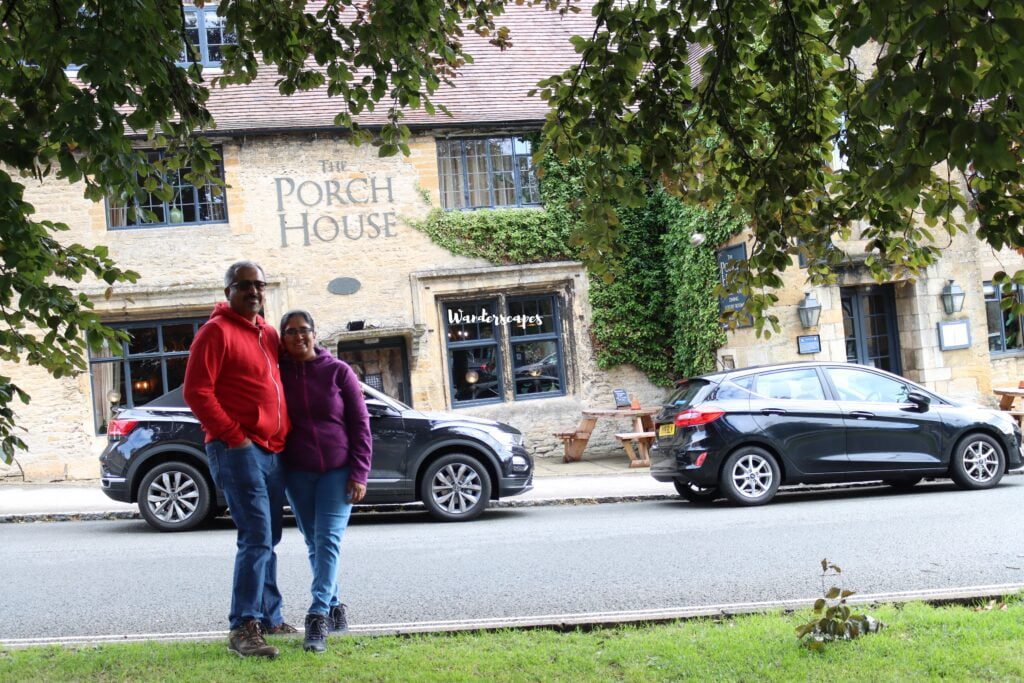
Brakspear group runs it now. The Porch House serves breakfast, lunch and dinner services on all days including Sundays. It is tastefully done and we had our dinner from there the previous night. It was a great place to enjoy some pub food. Although, as Indians who love a lot of spice and flavours in their food, we found the food a bit bland as a whole.
But the ambience and service were great. We absolutely enjoyed the dining experience. If you love pub/English food, you should definitely check it out. The place is popular and so you would want to reserve a table well in advance. We wanted to grab an early dinner, but could manage to get reservations later in the night only. To dine in the oldest inn in England itself was an amazing experience that we will not forget.
Market Square of Stow on the Wold
The market square in Stow on the Wold is special for more reasons than one. As soon as you enter the market square, the first thing you will notice is an ancient cross at the centre. This is the site of the last important battle of the English Civil War in 1646. It was here that the parliamentary army defeated the Royal army in March 1646.
The streets were covered in blood and the parish church held over 1000 prisoners while the wounded were laid on Digbeth street. There is a plaque near the cross telling us this was the site of Battle of Stow.
From there, we walked to the other end of the market square. The streets were busy with traffic and buzzing with life. As we approached a small park with a couple of benches under a tree, we stopped to take a good look of the place.
Ancient Sheep Market
It seemed unbelievable that centuries ago this was a bustling sheep market that traded more than 20000 sheep a day. We could imagine the scene – the streets overrun by sheep and traders, all the hustles and bustles of a busy market, bleating of sheep and traders bargaining with each other. What a sight it would have been!
Now, although the buildings remain more or less the same, the trade and wares changed drastically. Now, there are several antique shops, gift and craft shops, art galleries and hotels. There are innumerable cars parked everywhere and more pulling in as people go about with their day.
An Intriguing Sight
We also came across an interesting contraption at the market square. It looked like some sort of device to punish people. Was it a means to tie people and execute them? Or was it to slaughter animals? We don’t know. On the other hand, it could be something harmless as well. In case you know what it is, do let us know in the comment box.
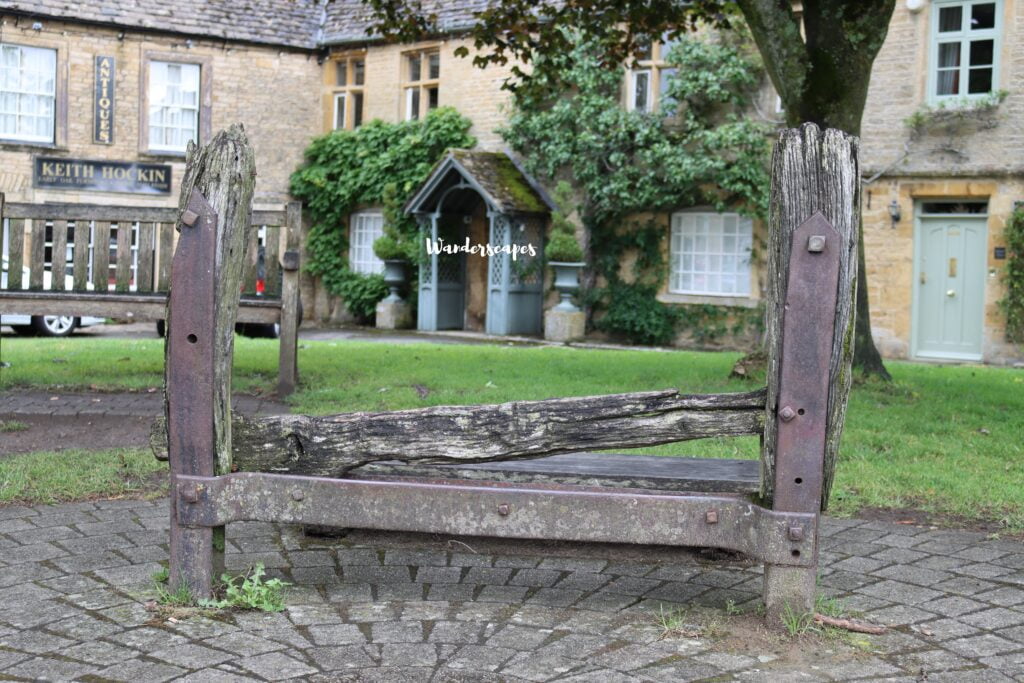
Tures of Stow on the Wold – Hidden Gems
After enjoying the sights of the market square and marvelling at how things change over years, we headed back to the other side. Here, we came across the Talbot hotel. It has been here since 1714 and seemed a good place for food and drink.
By the side of the hotel, we found a small alleyway stretching back. This was a narrow path that ran between two buildings. This is one of the famous tures in Stow on the Wold. We knew about the tures before and felt an odd excitement to see one finally.
Tures are narrow alleys leading to market square. We read that the ancient sheep traders used to bring their sheep through this way. It made it easy for them to count the sheep as they walked to the market. As we walked through the ture, we felt that could be the logical explanation for having such a narrow alley leading to the market square.
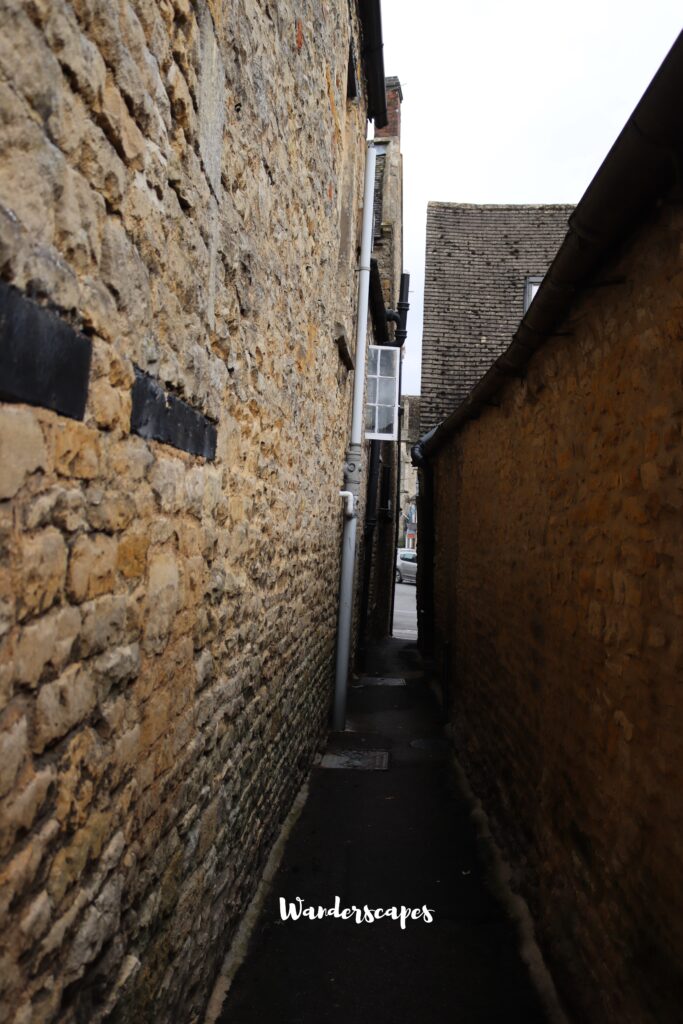
However, this was one of the many seen in Stow on the Wold. So, another theory is that it is just a small road leading from one road to another connecting the backyards of people. This particular ture we explored is also known as Monarch’s Way because apparently the king escaped from the parliamentary forces through this path during the civil war.
Parish Church
Like any other English town, Stow on the Wold also has its own parish church. St. Edward’s church is known for its architectural beauty as well as beautiful stained glass windows. It is a must-visit site for those interested in history or stained glass designs, among others.
The church ground is also home to a memory stone dedicated to those who lost lives in civil war. It is easily spotted as you enter the church grounds.
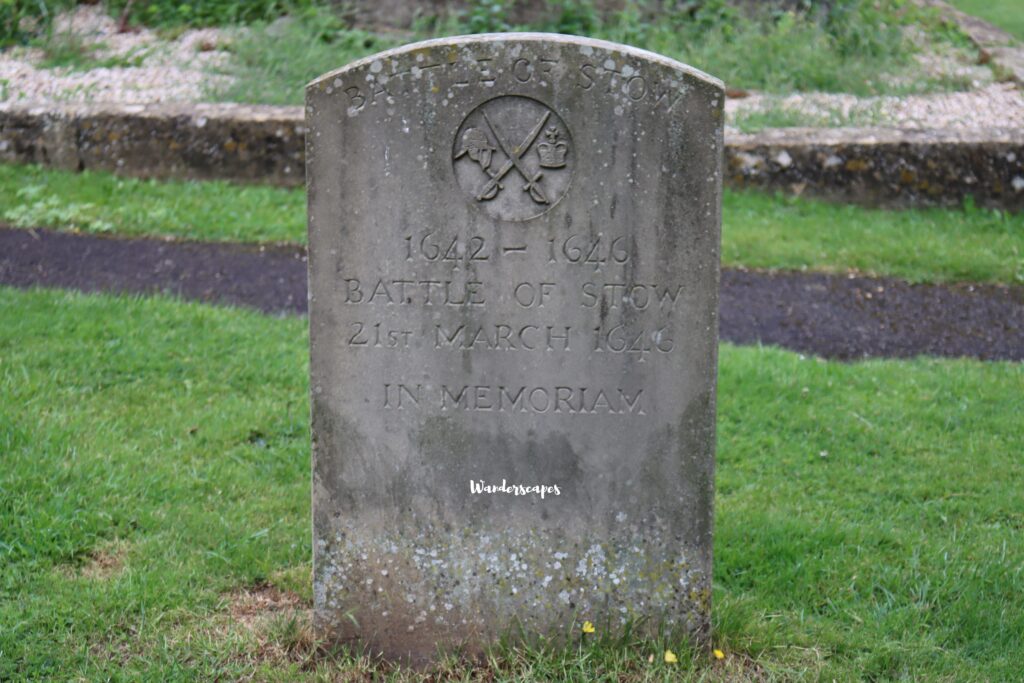
Doors of Durin?
Another popular attraction at the church is its famous tree-framed doorway. The arched north door, framed by ancient yew trees is said to have inspired JRR Tolkien to create the Doors of Durin in his famous work, Lord of the Rings. It is an extremely popular spot among tourists, who come to the church just to click pics at the doorway and share it on social media.
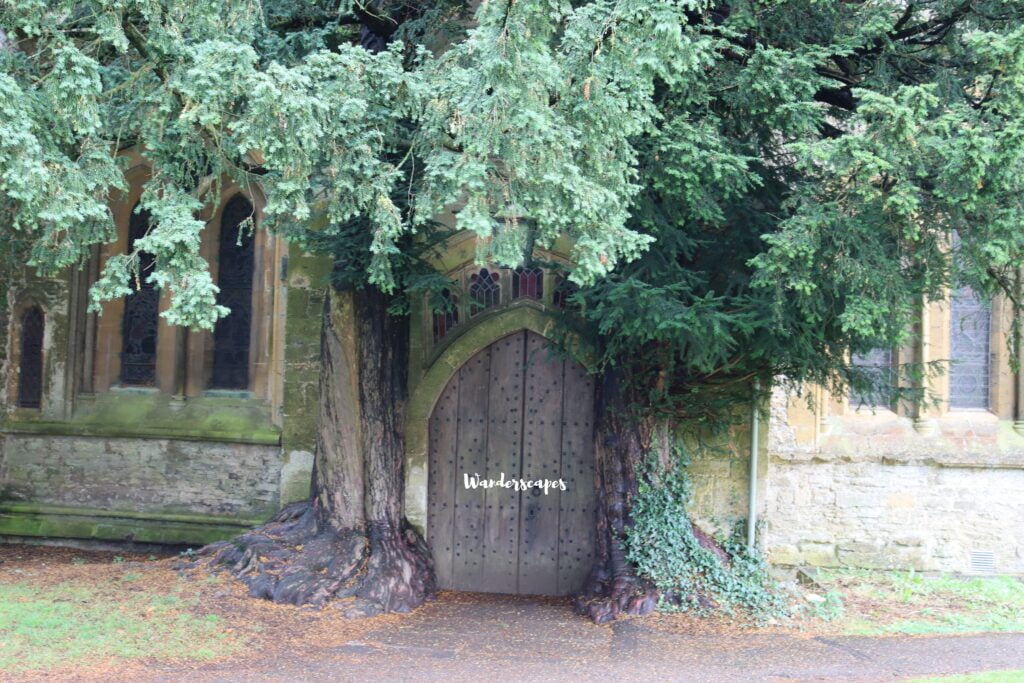
Although Tolkien had visited Cotswolds several times, there is nothing concrete to suggest that the arched north door of St. Edward’s church is the inspiration to the Doors of Durin in his books. However, once you are there and see the door for yourself, you might think it is definitely Doors of Durin. You will expect to reach another realm if you open the door.
It is an enchanting sight – well worthy of some pics on the social media.
Bidding Bye to Stow on the Wold
It was wonderful to explore Stow on the Wold and see some of its hidden gems for ourselves. We wanted to explore some more – we had hoped to see the well in which Edward the Stowe is said to have lived and some other sites. If we had been there in May or October, we could’ve seen the annual fair too. But again, is there any place on the earth where you can see and experience everything it has to offer in one go? Guess not.
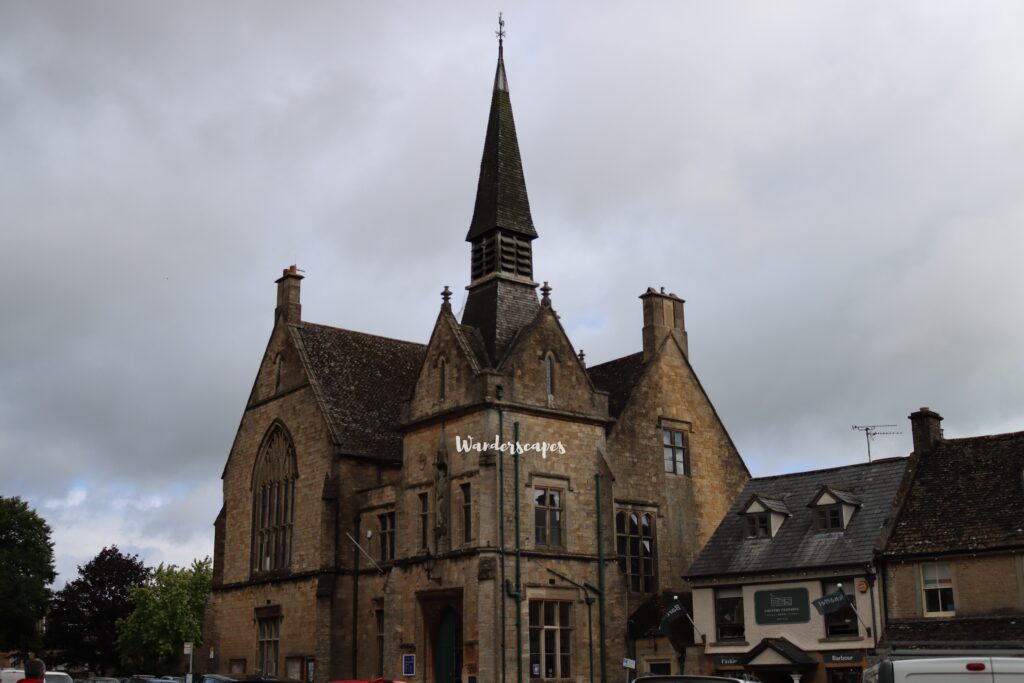
So, with the hopes that our wanderings will bring us back here again some other day, we bid bye to this charming town and went to the next place in our agenda. But, you’ll have to wait for the next blog to read all about that. What’s life without some waiting?
By the way, here is where you can find about our previous blogs of Cotswold travel series.
Here is our Vlog on Stow on the Wold – be sure to check it out.

